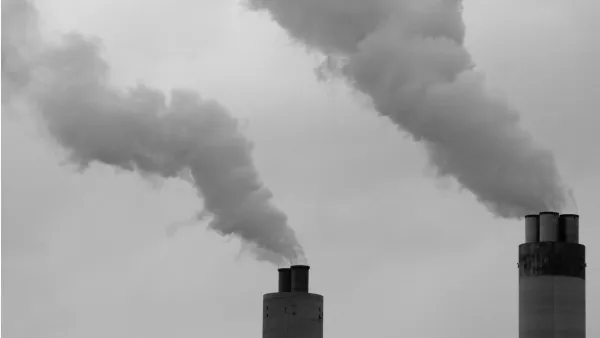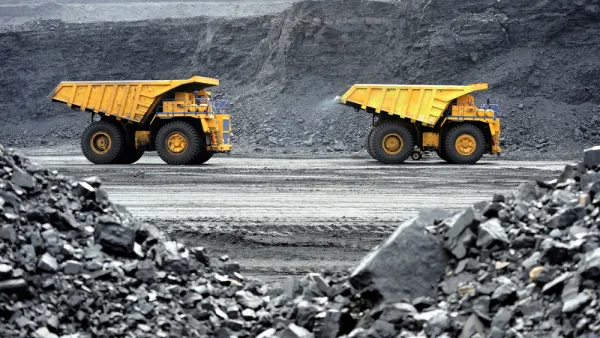The first four months of 2012 saw 'energy-related, CO2 emissions' drop to levels not seen since 1992, according to the EIA. Graphs show an 18% decrease in carbon emissions from coal, with lesser amounts from natural gas and petroleum from a year ago
Plummeting use of coal for power generation as many of the nation's coal power plants either shuttered or were converted to natural gas contributed greatly to the historic drop in the first quarter tabulations by the Energy Information Administration, (EIA) - "the energy department's statistics arm."
"Energy-related carbon emissions fell 8 percent from the same period a year ago to 1.134 billion metric tons (1.25 billion tons), according to the latest monthly energy review by the Energy Information Administration
Emissions from coal use fell sharply by 18 percent to 387 million tonnes in the January-March 2012 period - the lowest-first quarter tally since 1983 and the lowest for any quarter since April-June 1986."
While the other two fossil fuels saw nothing like an 18% decrease, they did, nonetheless, contribute to the 8% total decline.
The EIA news report provides graphs for coal, natural gas (down 2.8%), and petroleum (down 2.7%).
EIA largely attributes the total 8% decrease to three factors:
- A mild winter that reduced household heating demand and therefore energy use
- A decline in coal-fired electricity generation, due largely to historically low natural gas prices
- Reduced gasoline demand
In his July 21 column, "There's Still Hope for the Planet", NYT Washington bureau chief David Leonhardt refers to the drop in carbon emissions resulting from the transition from coal to natural gas as a "success" that illustrates an 'alternative' route to climate stabilization.
"The successes make it possible at least to fathom a transition to clean energy that does not involve putting a price on carbon - either through a carbon tax or a cap-and-trade program that requires licenses for emissions."
Contributor's note: EIA uses the term, "energy-related carbon dioxide emissions". It does not use the term 'carbon dioxide equivalents that I believe would take into account the methane leakage associated from natural gas production and consumption. I hope to add clarification.
Thanks to California League of Conservation Voters
FULL STORY: U.S. CO2 emissions fall to lowest first-quarter level in 20 years: EIA

National Parks Layoffs Will Cause Communities to Lose Billions
Thousands of essential park workers were laid off this week, just before the busy spring break season.

Retro-silient?: America’s First “Eco-burb,” The Woodlands Turns 50
A master-planned community north of Houston offers lessons on green infrastructure and resilient design, but falls short of its founder’s lofty affordability and walkability goals.

Delivering for America Plan Will Downgrade Mail Service in at Least 49.5 Percent of Zip Codes
Republican and Democrat lawmakers criticize the plan for its disproportionate negative impact on rural communities.

Test News Post 1
This is a summary

Test News Headline 46
Test for the image on the front page.

Balancing Bombs and Butterflies: How the National Guard Protects a Rare Species
The National Guard at Fort Indiantown Gap uses GIS technology and land management strategies to balance military training with conservation efforts, ensuring the survival of the rare eastern regal fritillary butterfly.
Urban Design for Planners 1: Software Tools
This six-course series explores essential urban design concepts using open source software and equips planners with the tools they need to participate fully in the urban design process.
Planning for Universal Design
Learn the tools for implementing Universal Design in planning regulations.
EMC Planning Group, Inc.
Planetizen
Planetizen
Mpact (formerly Rail~Volution)
Great Falls Development Authority, Inc.
HUDs Office of Policy Development and Research
NYU Wagner Graduate School of Public Service





























